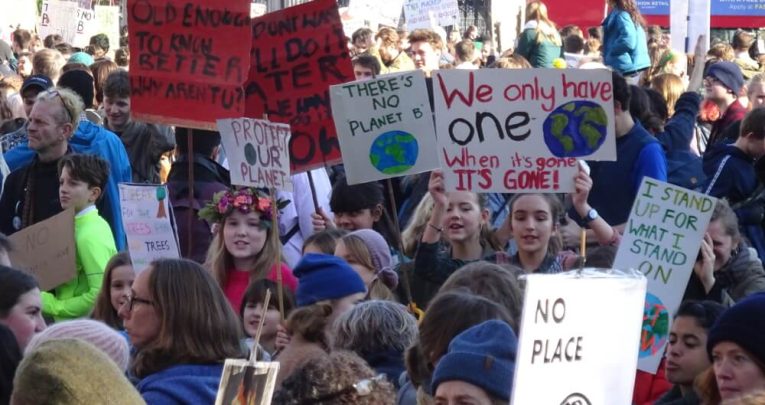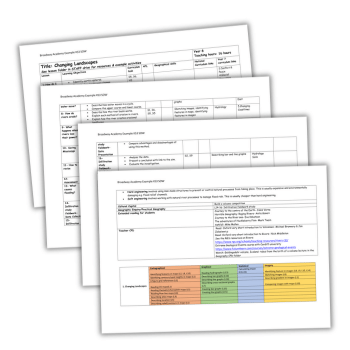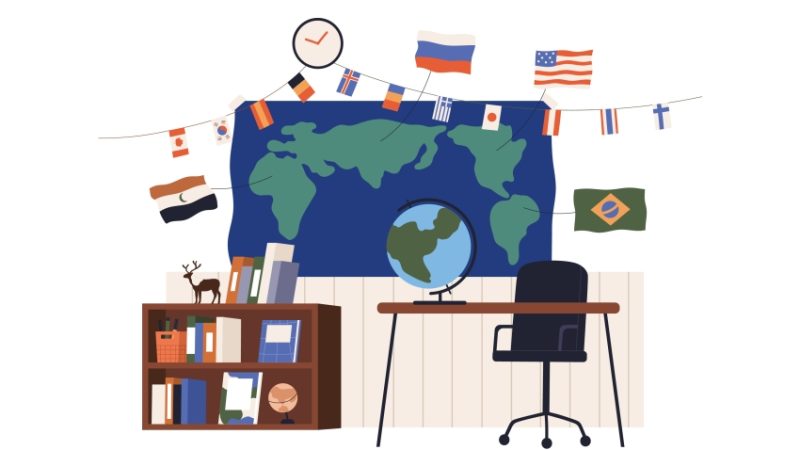How to Teach Climate Change in Secondary Geography

Young activists are demanding that schools put climate change on the curriculum – but the geography department should have it covered, argues Steve Brace…

- by Steve Brace

Amid declarations of climate emergencies, Extinction Rebellion blocking Oxford Street and politicians queuing up to meet with Greta Thunberg, it will be teachers who face many thorny issues in relation to how young people might better understand, and respond to, climate change.
Inspired by the advocacy of Thunberg, and their own idealism and commitment, over 1.6 million young people have taken part in the climate change strikes. These protests have brought into sharp contrast the pressures of safeguarding children and safeguarding the planet.
A headteacher – who, as a geographer totally ‘gets’ the importance of climate change – mentioned to me that he was faced with a parent insisting that their 13-year-old be given authorised time off for a strike because ‘this is the most important issue of his generation’.
A higher priority
As well as action to reduce carbon emissions, one of the other demands of the strikers is that the National Curriculum be reformed to address the ecological crisis. In support of this, a number of Oxford-based pupils have set up an online petition, which has been supported by over 70,000 people.
However, geography teachers will attest to the fact that the existing Key Stage 3 National Curriculum for geography already specifies clear requirements that cover this area.
Through my work at the Royal Geographical Society, it is a privilege to see geography teachers regularly fulfilling these, and other curriculum requirements, in classrooms across the country.
Put to the test
Beyond Key Stage 3 there are also 250,000 pupils who choose to study geography at GCSE and 35,000 at A Level. Each of their respective specifications requires study of this area of geography and candidates will probably be answering questions relating to climate change during this summer’s examinations.
In the lead up to these exams, geography teaches will have taught about the settled scientific evidence showing how our climate has changed and why our climate has changed, through the raised levels of CO2 as a result of human activity.
This will have taken place within wider lessons about the differences between weather – which changes daily – and climate, a rolling 30-year average.
Such knowledge underpins young people’s understanding of climate change and ensures that they are not open to ill-informed and inaccurate commentary about how one unseasonably cold day ‘disproves’ how it is described.
In addition, climate change is a phenomenon which operates at both the local and global scales, reaches across every continent and has no regard for national borders. In this respect, it is an issue that has a bearing on many other areas of the geography curriculum, so it cannot be considered in isolation.
Terms and conditions
However, it is important to recognise that this debate should not slip into suggesting that schools should be solely responsible for sorting out this issue.
There are proper expectations of what schools are responsible for and Mark Enser, head of Geography at Heathfield Community College (@EnserMark) has written persuasively about the need to stop laying the responsibility for all of society’s problems – be it climate change, knife crime or other issues – on schools.
We might also consider the language teachers use to approach climate change in their classrooms. There have been calls for a ratcheting up of the terms used to more fully reflect a sense of emergency and crisis.
This is reflected in some educators welcoming The Guardian’s rewriting of its style guidelines. These seek to reframe the debate; moving from talking about climate change to climate breakdown or a climate emergency and rather than discussing its impact on biodiversity to describe its impact on wildlife.
However, the Royal Geographical Society (with IBG)’s director, Professor Joe Smith, has noted that such moves might in fact be a step backwards.
For example, a switch to ‘wildlife’ could be too suggestive of care (just) for animals and can separate people from the discussion of about how our lives are already part of ecosystems.
Further, he argues the use of the words ‘crisis’ and ‘emergency’ suggests a sprinter’s mentality and their bursts of urgent effort, whereas to successfully address climate change we will need to live sustainably over the longer term, which is more suggestive of a marathon runner’s mentality.
What the current strikes have illustrated to some is that there is an insurmountable generational gap between young climate strikers and older generations; yet neither group has a monopoly on virtue or vice.
What is certain is that the study of geography is essential in equipping the next generation to better understand climate change and be more secure in how this issue will impact on so many parts of our lives.
As the geographer Dr Alex Standish has argued, using geography to teach children about the world ‘is an important prerequisite to the inheritance of political responsibility’.
The teaching of climate change and ecological issues within the KS3 Geography Curriculum:
- Ecosystems, and weather and climate, including change in the climate from the ice age to the present
- How human and physical processes interact to influence, and change landscapes, environments and the climate
- How human activity relies on effective functioning of natural systems
The bigger picture
How climate change is relevant across the whole geography curriculum
Impact on hazards As ocean temperature rise, there is a likelihood of more intensive hurricanes and greater threat to the growing populations living in coastal towns and cities.
Changes to the extent of the earth’s biomes With global rising temperatures, particularly in higher latitudes, there will be changes to the nature and extent of the earth’s biomes, such as the reduction in the extent of Arctic sea ice and areas of permafrost.
Rediscovering the importance of soils Soil, as well as the plants that grow in it, are a valuable carbon store.
Global cooperation The 2015 Paris Climate Change Conference secured the agreement of 196 countries to a goal to limit global warming to ‘well below 2℃’ compared to pre-industrial levels.
Strategies for adaptation and mitigation How will societies adapt to and mitigate against future climate change? How can we better understand seemingly contradictory patterns such as China being one of the world’s leading carbon producers and largest investors in renewables?
How is the UK doing? 2008 saw the passing of the UK’s Climate Change Act and in 2017, the UK’s greenhouse gas emissions were 43% below 1990 levels.
Steve Brace is head of education at the Royal Geographical Society (with IBG). Find them on Twitter at @RGS_IBGSchools and follow Steve at @SteveBraceGeog.
All photographs by David Holt











